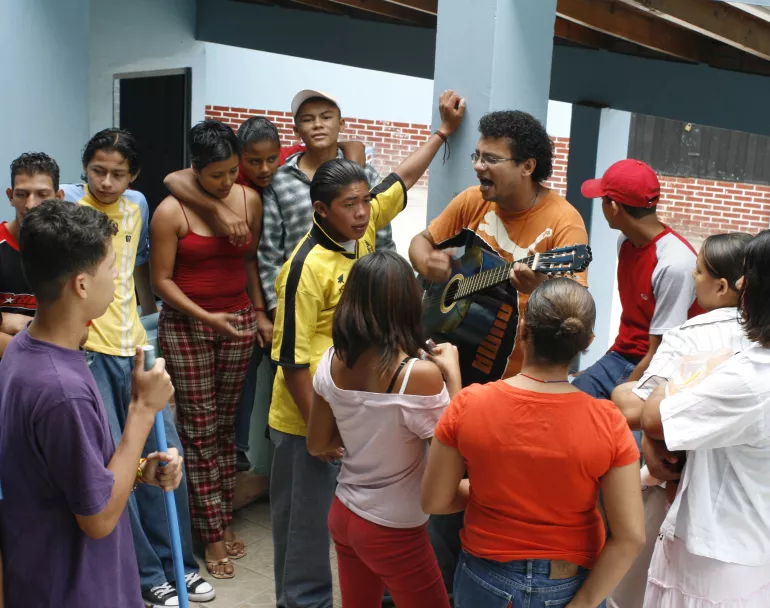Foster Care & Child Welfare Services
When youth age out of the system at 18 or 21 years of age, they are often ill-equipped to navigate a successful path to a self-sufficient and independent adulthood.

Young People Who Age Out of the System Are Vulnerable
A third of all youth who come to Covenant House have had involvement with the foster care or child welfare systems in their lives, meaning there was a problem of violence, abuse, neglect, or crisis in their home. While a healthy foster placement might help a young person come to terms with such hardships, a poor placement or an untimely aging out of the system can leave traumatic experiences unresolved.
When a young person ages out of the system at 18 or 21 years of age, they are often ill-equipped to navigate a successful path to a self-sufficient and independent adulthood. That’s precisely when they become most vulnerable to homelessness, human trafficking, and a host of other threats and obstacles to their well-being and future happiness.

Foster Care Reform in the U.S. & Canada
According to the U.S. Administration for Children and Families (ACF), by age 21, at least 26% of young people who aged out of foster care in the United States experienced a period or more of homelessness; a third lacked a high school diploma; and 25% had no health insurance. A quarter of these youth already had a child.
A study in Canada, conducted by the Canadian Observatory on Homelessness (COH), found that nearly three-quarters of all children who became homeless before age 16 came from homes where child welfare services had intervened at some point. Transgender, gender nonbinary, and LGBTQ2S youth were more likely to report child welfare services involvement in the home than were their peers, the COH said.
Similar to ACF, the COH study also found that young people aging out of foster care or group homes without support face serious impacts on the next stages of their lives. They experience higher rates of unemployment, a lack of educational engagement and achievement, involvement in the criminal justice system, and poverty. In other words, their great potential for success and happiness go untapped and remain dormant.
Foster Care in Latin America
In Central America and Mexico, where Covenant House has served since 1981, child and adolescent safety nets are relatively thin or nonexistent, leaving children and youth who experience abuse, neglect, or violence in their homes and communities little recourse. Far too often, they or their parents come to the conviction that their best option is to seek protection and opportunity elsewhere, and they set out with or without a guardian on the risk-laden migrant trail.

We Help Youth Deal With the Mental and Physical Health Effects of Homelessness
Our trauma-informed, strengths-based approach to our residential programs and support services meet children and youth where systems have either left off or failed to meet their needs. We believe in our young people and provide them with the love, respect, and vital services they deserve and need to thrive.


"When I turned 18, I left and didn't look back. I had no plan, no money, just a bag full of clothes and a will never to go back to my foster home."
—Covenant House AlumniShelter Is Only the Beginning
From crisis to care: Find out what it's like when a young person enters our doors.


